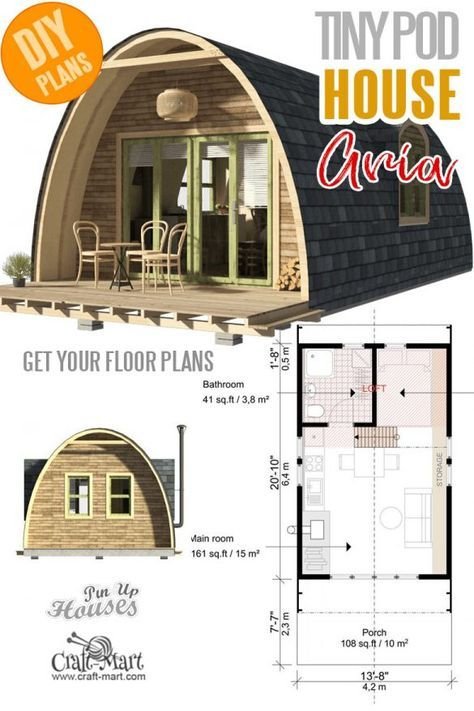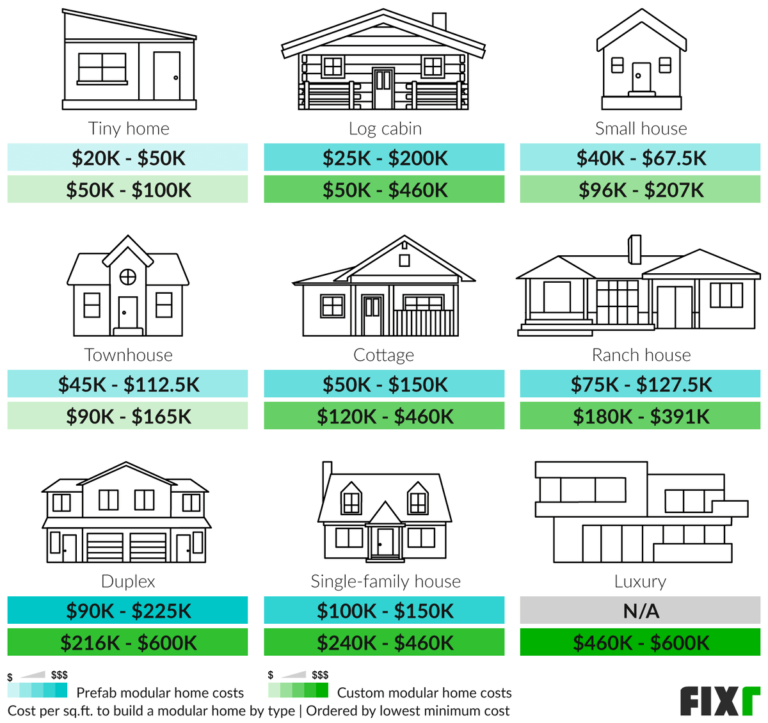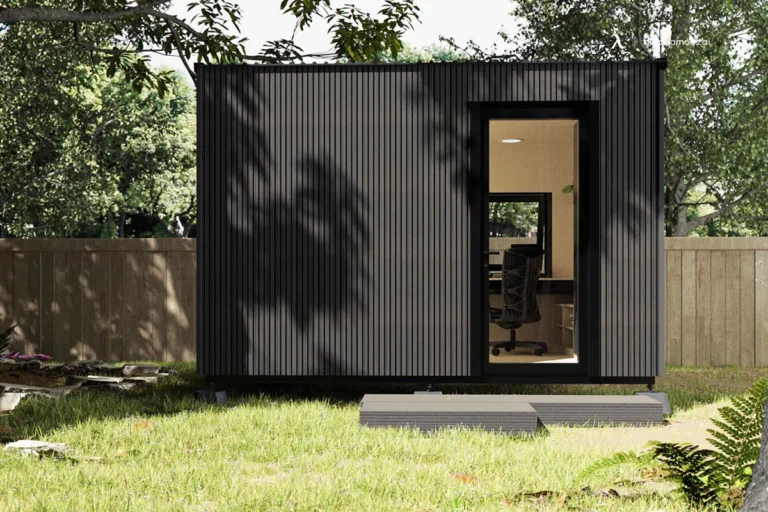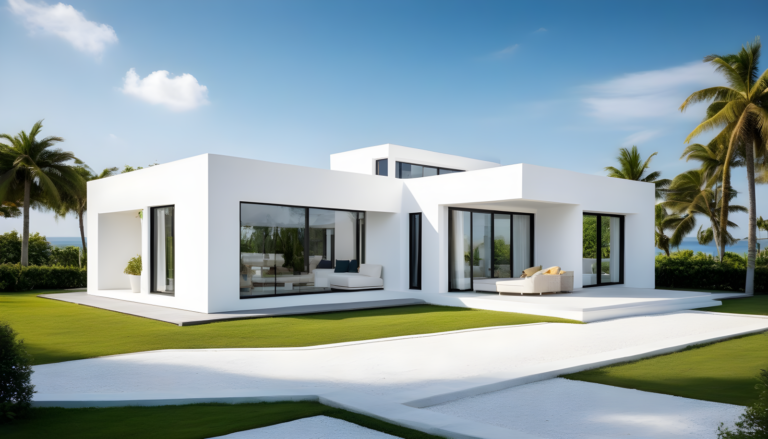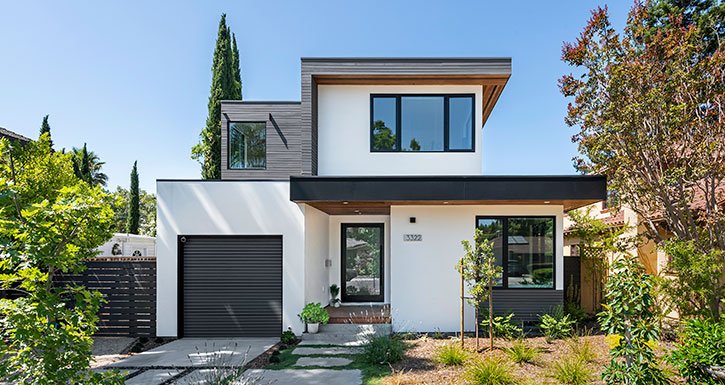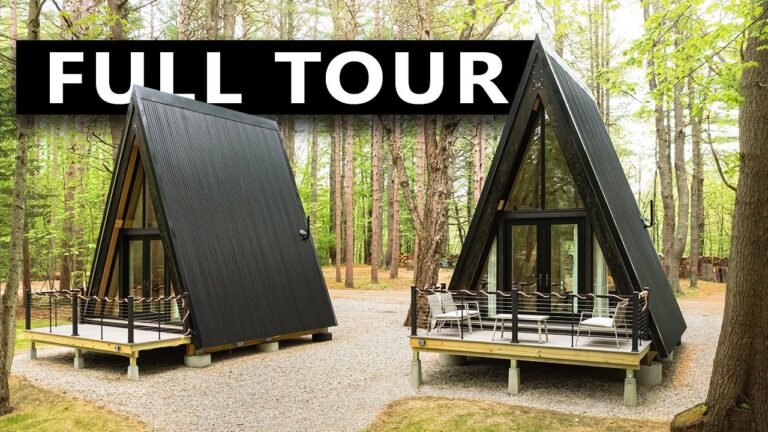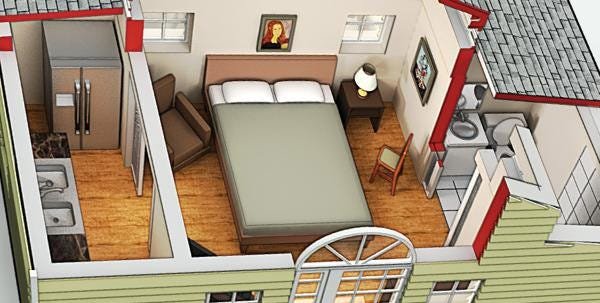How to Build a Pod House: Simple Steps to Success
To build a pod house, start by selecting a suitable site and designing the layout. Then, gather materials and follow construction guidelines.
Pod houses, also known as tiny homes or modular homes, offer a sustainable and cost-effective living solution. These compact dwellings maximize space and minimize environmental impact. Choosing the right location is crucial for access to utilities and amenities. Design the layout to ensure efficient use of space and natural light.
Use eco-friendly materials to enhance sustainability. Follow local building codes and regulations for safety and compliance. Pod houses can be customized to meet individual needs, making them a versatile housing option. With careful planning and execution, building a pod house can be an efficient and rewarding project.

Credit: m.youtube.com
Introduction To Pod Houses
Pod houses are small, efficient living spaces. They are designed to maximize comfort in a minimal area. These homes are perfect for those who embrace a simpler lifestyle. Pod houses are gaining popularity due to their affordability and sustainability.
Rise Of Compact Living
Compact living is on the rise. People are choosing smaller, more efficient homes. This shift is driven by the need for sustainability and cost-efficiency. Many find that they do not need large spaces to live comfortably. Pod houses offer a great solution.
Compact living also allows for easier maintenance. Smaller homes require less cleaning and upkeep. This means more time for hobbies and relaxation. Pod houses make life simpler and more enjoyable.
Benefits Of A Pod House
Pod houses offer several benefits. Firstly, they are affordable. Building a pod house costs less than a traditional home. This makes it easier for people to own a home.
Secondly, pod houses are environmentally friendly. They use fewer resources and produce less waste. This makes them a great choice for those who care about the planet.
Thirdly, pod houses are versatile. They can be used as primary homes, guest houses, or vacation homes. Their small size makes them easy to transport and set up in different locations.
Lastly, pod houses promote a minimalist lifestyle. They encourage people to live with only the essentials. This leads to a more fulfilling and less cluttered life.
| Benefit | Description |
|---|---|
| Affordability | Cost less than traditional homes |
| Environmental Impact | Use fewer resources and produce less waste |
| Versatility | Can serve as primary, guest, or vacation homes |
| Minimalism | Encourage living with essentials |
Choosing The Right Location
Building a pod house requires careful planning. One crucial step is choosing the right location. The perfect location ensures your pod house is safe, functional, and comfortable.
Zoning Laws And Regulations
First, check the zoning laws in your area. Zoning laws dictate where you can build and what type of structure is allowed. Visit your local government office or their website for information. Understanding these laws helps you avoid legal issues.
| Key Points | Description |
|---|---|
| Residential Zoning | Typically allows single-family homes, including pod houses. |
| Commercial Zoning | May restrict residential buildings. Check specifics. |
| Special Permits | You might need a special permit for unique structures. |
Assessing The Environment
Next, assess the environment where you plan to build. This step involves several factors.
- Climate: Choose a spot with a climate suitable for your pod house design.
- Soil Quality: Ensure the soil is stable and suitable for construction.
- Accessibility: Make sure the location is easily accessible for construction equipment and materials.
- Utilities: Check the availability of water, electricity, and other utilities.
Consider the natural surroundings. A beautiful view can enhance your living experience. Avoid areas prone to natural disasters like floods or landslides.
Designing Your Pod House
Designing a pod house is a unique and exciting project. You can create a cozy, sustainable living space with thoughtful planning. Focus on maximizing space and integrating eco-friendly features.
Maximizing Space Efficiency
Pod houses are small, so every inch counts. Start by planning a smart layout. Think about multi-functional furniture. A sofa that turns into a bed saves space. Use built-in storage options. Shelves and cabinets can fit into walls and under stairs.
Consider an open floor plan. Fewer walls make a space feel larger. Use light colors and mirrors. They reflect light and open up the room. Keep decorations minimal. Clutter makes a space feel cramped.
| Space-Saving Ideas | Benefits |
|---|---|
| Multi-functional furniture | Saves space |
| Built-in storage | Maximizes space |
| Open floor plan | Makes space feel larger |
| Light colors | Reflects light |
Incorporating Eco-friendly Features
Building a pod house is a chance to go green. Use sustainable materials like bamboo or recycled wood. They are eco-friendly and durable. Install solar panels on the roof. They provide renewable energy and reduce utility bills.
Use energy-efficient appliances. Look for the Energy Star label. These appliances use less power. Install a rainwater harvesting system. It collects rainwater for use in gardens and toilets. Consider a composting toilet. It reduces water use and creates compost for gardens.
- Use sustainable materials
- Install solar panels
- Choose energy-efficient appliances
- Set up rainwater harvesting
- Consider a composting toilet
These eco-friendly features help save the planet. They also reduce your living costs.
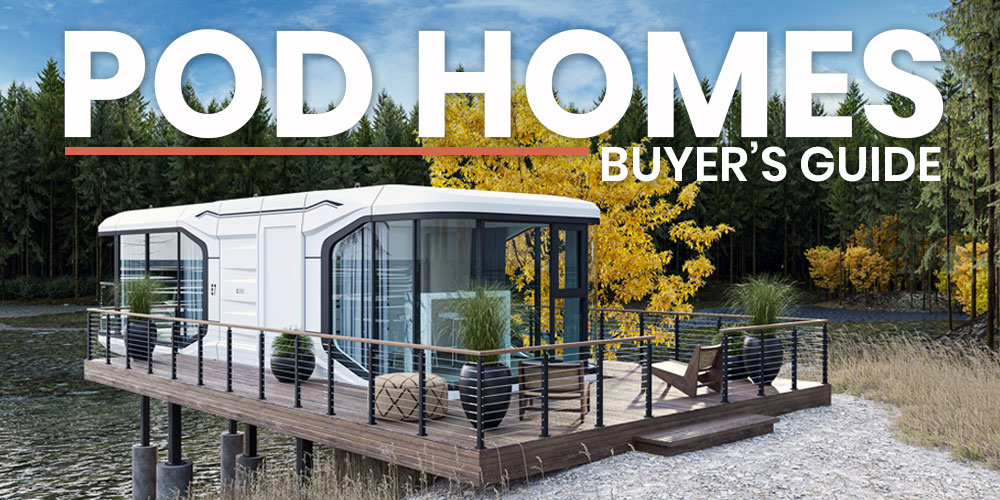
Credit: thetinylife.com
Materials And Tools Needed
Building a pod house is a fun and rewarding project. To get started, you need to gather the right materials and tools. This section will guide you through everything you need.
Sustainable Building Materials
Choosing sustainable building materials is important for eco-friendly construction. These materials are good for the environment.
- Bamboo: Strong, flexible, and renewable.
- Recycled wood: Reduces waste and is cost-effective.
- Hempcrete: Lightweight and energy-efficient.
- Recycled steel: Durable and recyclable.
- Straw bales: Excellent for insulation.
Essential Tools For Construction
Having the right tools makes the building process easier. Below is a list of essential tools you’ll need:
| Tool | Purpose |
|---|---|
| Hammer | For driving nails. |
| Screwdriver | For screwing and unscrewing. |
| Saw | For cutting wood. |
| Level | To ensure surfaces are even. |
| Measuring tape | For accurate measurements. |
| Drill | For making holes. |
| Utility knife | For cutting various materials. |
Laying The Foundation
Building a pod house begins with a strong foundation. This crucial step ensures the durability and stability of your pod home. Here’s how to lay the foundation for your pod house.
Preparing The Site
First, clear the land of debris and vegetation. This includes rocks, trees, and shrubs. Level the ground using heavy machinery. Check the soil condition to ensure it’s suitable for building. You may need to compact the soil for stability. Next, mark the boundaries of your pod house. Use stakes and string for precise measurements. Finally, get the site inspected by a professional.
Foundation Options For Pod Houses
There are several foundation options for pod houses. Choose one based on your site conditions and budget.
| Foundation Type | Description | Pros | Cons |
|---|---|---|---|
| Concrete Slab | A flat, solid base made of concrete. |
|
|
| Pier and Beam | Elevated foundation using piers and beams. |
|
|
| Screw Piles | Steel piles screwed into the ground. |
|
|
Choose the best foundation for your specific needs. Ensure the foundation is level and secure before proceeding with construction. A solid foundation guarantees the longevity of your pod house.
Constructing The Frame
Constructing the frame of your pod house is the first major step. This phase sets the foundation for the entire project. A strong and well-built frame ensures stability and durability. Here, we cover essential techniques and tips for a robust frame.
Building Techniques For Strength
Start by choosing the right materials. Use high-quality timber or metal for the frame. Ensure all pieces are straight and free of defects. Measure and cut each piece precisely. This ensures everything fits together perfectly.
Create a solid base by using a strong foundation. Concrete slabs or piers work well. Attach the frame securely to this base. Use bolts and brackets for added strength.
Follow these steps for building a strong frame:
- Measure and cut the frame pieces.
- Assemble the base frame.
- Attach the vertical supports.
- Connect the roof trusses.
- Secure all joints with bolts or screws.
Check the frame frequently for level and square. Adjust as needed to keep everything aligned.
Weatherproofing The Structure
Weatherproofing is crucial to protect your pod house from the elements. Start by wrapping the frame in a weather-resistant barrier. This layer prevents moisture from entering the structure.
Next, install insulation to keep the interior comfortable. Use materials like foam boards or fiberglass batts. Secure the insulation between the frame members.
Follow these steps to weatherproof your pod house:
- Apply a weather-resistant barrier.
- Install insulation materials.
- Seal all gaps and seams.
- Attach exterior cladding or siding.
Sealing gaps and seams is vital. Use caulk or weatherstripping to fill any openings. This prevents drafts and moisture from entering.
Finally, add exterior cladding or siding. Choose materials that are durable and weather-resistant. Attach the cladding securely to the frame. This adds an extra layer of protection.
Interior And Exterior Finishing
Building a pod house is a rewarding experience. The right interior and exterior finishing can make it unique. This guide will help you transform your pod house into a cozy haven.
Creative Use Of Space
Pod houses are compact. You need to maximize every inch.
- Multi-functional furniture: Use pieces that serve multiple purposes.
- Loft spaces: Create extra storage or sleeping areas.
- Built-in storage: Save space with built-in shelves and cabinets.
- Sliding doors: These save space compared to traditional doors.
Use these ideas to make your pod house feel spacious and comfortable.
Choosing The Right Finishes
The right finishes can elevate your pod house. Focus on both interior and exterior elements.
- Walls: Use light colors to make spaces feel bigger.
- Flooring: Durable options like vinyl or laminate work well.
- Lighting: Install LED lights to save energy and provide ample light.
- Fixtures: Opt for modern and sleek designs.
- Siding: Choose materials that are weather-resistant.
- Roofing: Metal roofs last long and require little maintenance.
- Windows: Double-glazed windows provide insulation.
- Landscaping: Add plants and paths to enhance curb appeal.
Each finish contributes to the overall appeal and functionality of your pod house. Choose wisely to create a beautiful and practical living space.
Utilities And Amenities
Building a pod house requires careful planning, especially for utilities and amenities. These elements ensure the house is livable and comfortable. Let’s explore the options for utilities and the must-have amenities for comfort.
Off-grid Vs. Connected Utilities
Deciding between off-grid and connected utilities is crucial. Each option has its pros and cons.
| Off-Grid Utilities | Connected Utilities |
|---|---|
|
|
Off-grid utilities are ideal for remote locations. They provide independence from city services. Solar panels and wind turbines are common power sources. Rainwater harvesting systems supply water. Septic systems handle waste.
Connected utilities are easier to manage. They link directly to city infrastructure. This option is ideal for pod houses in urban or suburban areas.
Must-have Amenities For Comfort
A comfortable pod house needs essential amenities. These amenities make daily living easier and more enjoyable.
- Heating and Cooling
- Efficient HVAC systems
- Insulation for temperature control
- Kitchen Facilities
- Stove and oven
- Refrigerator
- Storage cabinets
- Bathroom Essentials
- Shower or bathtub
- Toilet
- Sink
- Comfortable Sleeping Area
- Bed or sleeping platform
- Closet space
- Entertainment and Connectivity
- WiFi access
- Television
- Sound system
Heating and cooling systems are necessary for comfort. Proper insulation helps with temperature control. Kitchen facilities include a stove, oven, and refrigerator. Bathroom essentials like a shower, toilet, and sink are a must.
A comfortable sleeping area should have a bed and closet space. Entertainment and connectivity options enhance the living experience. Ensure your pod house has WiFi, a television, and a sound system.
Landscaping And Outdoor Spaces
Creating beautiful outdoor spaces is essential for any pod house. These spaces enhance your living experience and connect you with nature. Thoughtful landscaping and functional outdoor areas are key elements.
Harmonizing With Nature
Your pod house should blend seamlessly with its surroundings. Use native plants to create a natural look. Native plants require less maintenance and water. They also support local wildlife.
Consider using natural materials like stone and wood. These materials will help your pod house feel like a part of the landscape. Avoid using artificial materials that clash with the environment.
Avoid large lawns. Instead, use ground covers and perennials. These options are low-maintenance and eco-friendly.
Functional Outdoor Living Areas
Outdoor spaces can serve many purposes. Create areas for dining, relaxation, and play. Use durable furniture that can withstand the elements.
Define spaces with pathways and borders. Use gravel or stone for paths. These materials are both functional and attractive.
Include a variety of seating options. Benches, chairs, and hammocks provide comfort and flexibility. Make sure there is shade for hot days. Use pergolas or shade sails to create cool, inviting areas.
Consider building a fire pit or outdoor kitchen. These features make your outdoor spaces usable year-round. They also create a focal point for gatherings.
| Element | Benefits |
|---|---|
| Native Plants | Low maintenance, supports wildlife |
| Natural Materials | Eco-friendly, blends with environment |
| Ground Covers | Reduces lawn area, low water needs |
| Shade Structures | Provides comfort, reduces heat |
| Fire Pit | Year-round use, focal point |

Credit: www.pinterest.com
Maintenance And Upkeep
Maintaining and upkeeping your pod house is crucial for its longevity. Regular maintenance ensures the structure remains safe and comfortable. Here are some tips and strategies for keeping your pod house in top shape.
Routine Maintenance Tips
Routine maintenance helps prevent small problems from becoming big issues. Follow these tips to keep your pod house in great condition:
- Inspect the Exterior: Check for cracks, mold, or damage.
- Clean Gutters: Remove leaves and debris to prevent water damage.
- Check Seals: Inspect window and door seals for leaks.
- Test Smoke Alarms: Ensure they are working properly.
- Maintain HVAC Systems: Change filters and service units regularly.
Long-term Upkeep Strategies
Long-term upkeep strategies help maintain the value and functionality of your pod house. Consider these strategies for sustained maintenance:
- Regular Painting: Paint the exterior every 5-7 years to protect surfaces.
- Structural Inspections: Hire professionals to inspect the structure annually.
- Upgrade Insulation: Improve insulation every few years for energy efficiency.
- Landscaping Maintenance: Trim trees and bushes to protect the house from damage.
- Waterproofing: Apply waterproof sealants to exterior surfaces.
Here is a table summarizing the maintenance schedule:
| Task | Frequency |
|---|---|
| Inspect the Exterior | Monthly |
| Clean Gutters | Quarterly |
| Check Seals | Quarterly |
| Test Smoke Alarms | Monthly |
| Maintain HVAC Systems | Bi-annually |
| Regular Painting | Every 5-7 years |
| Structural Inspections | Annually |
| Upgrade Insulation | Every 10 years |
| Landscaping Maintenance | Bi-annually |
| Waterproofing | Every 3-5 years |
By following these tips and strategies, your pod house will remain in excellent condition for years to come.
Frequently Asked Questions
How Long Does It Take To Build A Pod?
Building a pod typically takes 2 to 4 weeks. The exact time depends on the pod’s complexity and customization.
What Is A Granny Pod House?
A granny pod house is a small, self-contained home designed for elderly family members. It provides independence while staying close.
What Is A Pod House?
A pod house is a compact, modular home designed for efficient use of space. It offers modern, eco-friendly living.
How Much Space Do You Need For A Granny Pod?
A granny pod typically requires around 300 to 500 square feet of space. Consider local zoning laws and regulations.
Conclusion
Building a pod house offers a unique and sustainable living solution. With the right materials and planning, anyone can create an efficient, eco-friendly home. Follow the steps outlined, and you’ll soon enjoy the benefits of your very own pod house.
Start your journey towards innovative living today.
